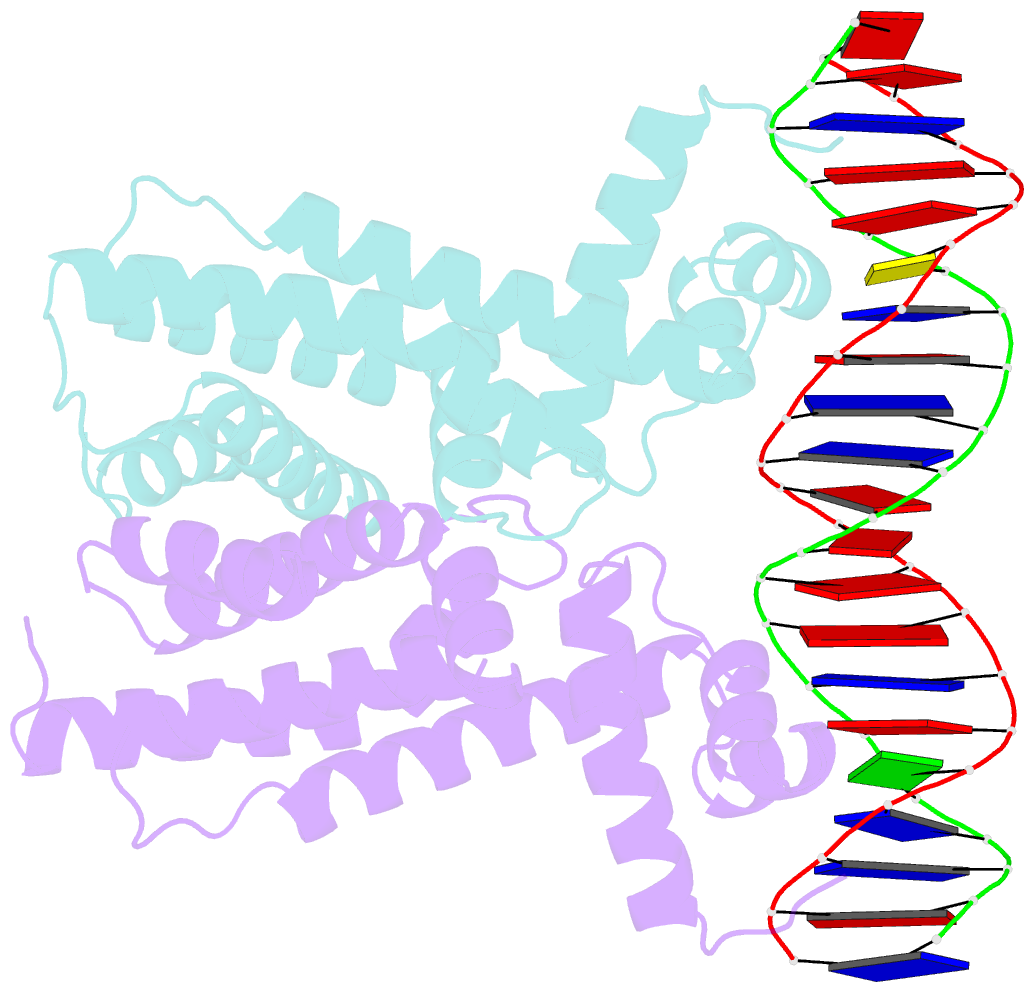Summary information and primary citation
- PDB-id
- 7amn; SNAP-derived features in text and JSON formats;
DNAproDB
- Class
- transcription
- Method
- X-ray (2.3 Å)
- Summary
- Structure of luxr with DNA (repression)
- Reference
- Zhang J, Liu B, Gu D, Hao Y, Chen M, Ma Y, Zhou X, Reverter D, Zhang Y, Wang Q (2021): "Binding site profiles and N-terminal minor groove interactions of the master quorum-sensing regulator LuxR enable flexible control of gene activation and repression." Nucleic Acids Res., 49, 3274-3293. doi: 10.1093/nar/gkab150.
- Abstract
- LuxR is a TetR family master quorum sensing (QS) regulator activating or repressing expression of hundreds of genes that control collective behaviors in Vibrios with underlying mechanism unknown. To illuminate how this regulator controls expression of various target genes, we applied ChIP-seq and DNase I-seq technologies. Vibrio alginolyticus LuxR controls expression of ∼280 genes that contain either symmetric palindrome (repDNA) or asymmetric (actDNA) binding motifs with different binding profiles. The median number of LuxR binding sites for activated genes are nearly double for that of repressed genes. Crystal structures of LuxR in complex with the respective repDNA and actDNA motifs revealed a new mode of LuxR DNA binding that involves contacts of its N-terminal extension to the minor groove. The N-terminal contacts mediated by Arginine-9 and Arginine-11 differ when LuxR binds to repDNA vs actDNA, leading to higher binding affinity at repressed targets. Moreover, modification of LuxR binding sites, binding profiles, and N-terminal extension have important consequences on QS-regulated phenotypes. These results facilitate fundamental understanding of the high flexibility of mechanisms of LuxR control of gene activation and repression in Vibrio QS, which may facilitate to design QS inhibiting chemicals that interfere with LuxR regulation to effectively control pathogens.





